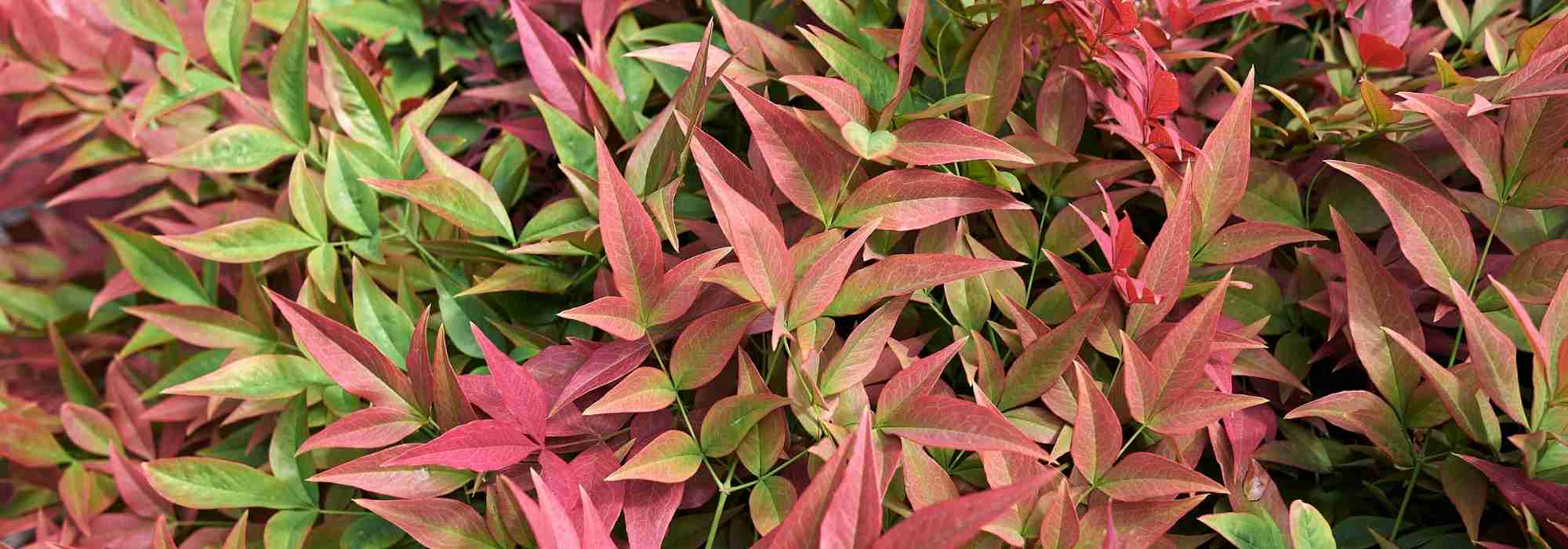
What can be planted on a north-facing terrace?
Our selection of perennials and shrubs to green up your shaded terrace
Contents
A north-facing terrace often gives the impression of being unable to host a beautiful array of plants, as shade is strongly present throughout the year. This exposure indeed receives less sunlight, temperatures are cooler, and the winds are colder. Frost also lingers longer here, which limits plant choices to particularly hardy species.
However, there are many shrubs and perennials that thrive in these conditions, making it easy to green your north-facing terrace by combining evergreen bushes that grow well in pots: they will add volume and an attractive visual throughout the year, while deciduous bushes, perennials, and ornamental grasses will add a touch of surprise. Consider incorporating bright colours and variegated foliage to cheer up this space, which you will surely enjoy during the warmest hours of summer!
→ Discover also our selection of dwarf shrubs for a north-facing balcony
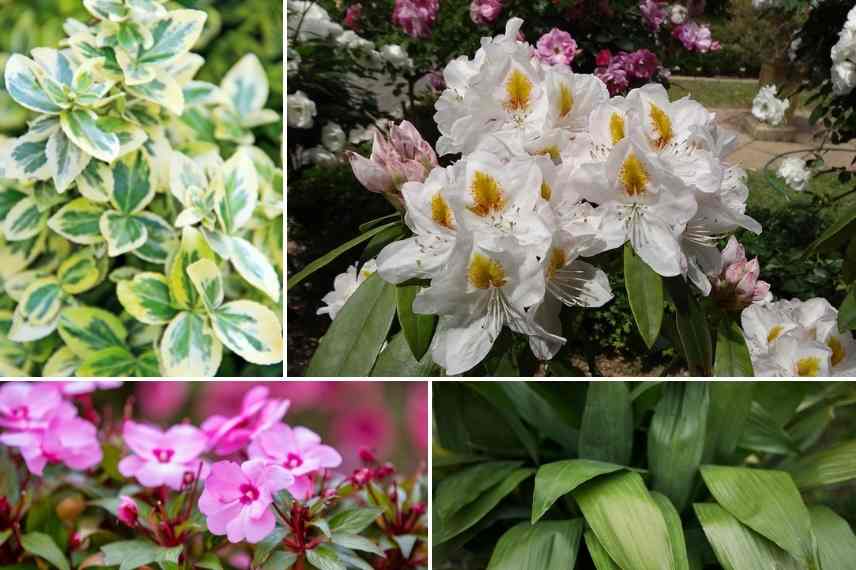
On a shaded terrace, play with different types of foliage and flowering: here, variegated euonymus, Rhododendron, Impatiens, Aspidistra
Perennials
Hellebores
Is it still necessary to introduce the lovely Christmas roses, often found in gardens but also thriving in containers on a balcony or terrace? They offer graceful flowering that lasts for many weeks, from December to April. By choosing varieties like Helleborus argutifolius or Helleborus niger, you invite superb leathery, dentate or veined leaves to your shaded space, which remain in place until spring without completely disappearing. To make the most of the enchanting winter flowering of these Christmas beauties, place them in raised planters or slightly elevated pots, as this will allow you to better appreciate their gently drooping flowers.
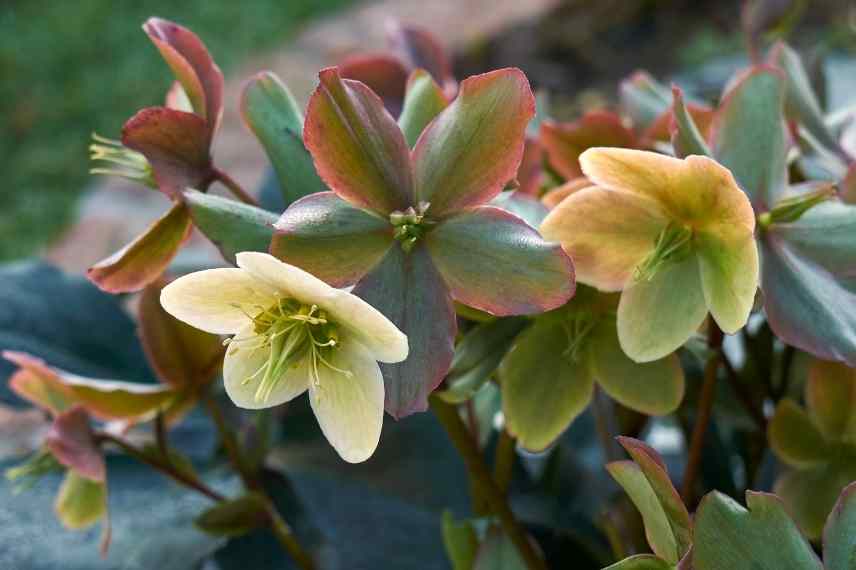
Hostas
Stars of the shade, Hostas are perennials perfectly suited to bring lush greenery to a north-facing terrace during the beautiful season. Dormant from November to April, they awaken by unfurling their sumptuous, heavily veined and often crinkled foliage, adding an irreplaceable touch of green to the shade. Planting them in pots is also an effective way to combat snails and slugs, which find it harder to reach them. As they are extremely hardy, they can be used to green up any terrace. Choose medium varieties based on the size of your terrace.
Discover our selection of Hostas
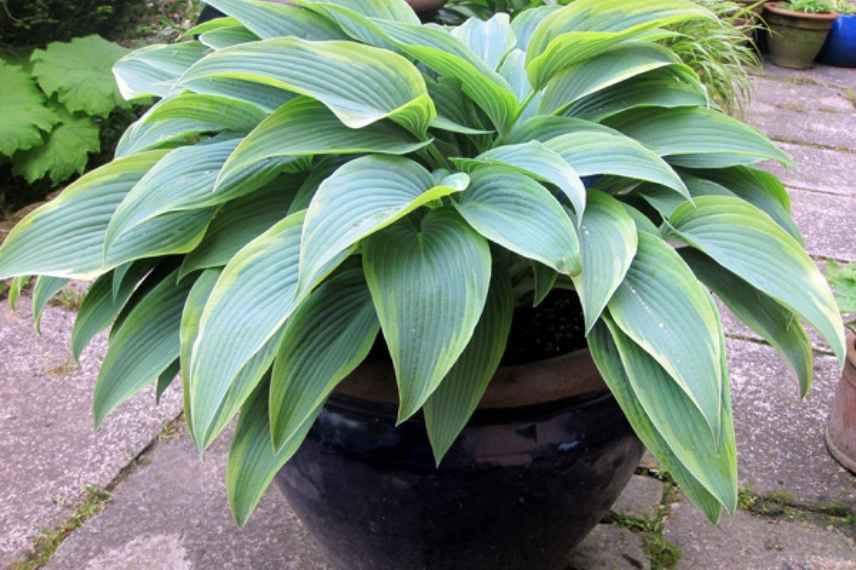
Heucheras
Here are magical perennials to add colour and form to a terrace: their palmate foliage is remarkable, displaying a wide range of colours, from lemon green to purple, including caramel, yellow, pink… and a whole palette of variegated shades. The veins are often contrasting: a delight for those who appreciate ornamental foliage, as the varieties are such that it is easy to find what you love and to combine them. Remaining small in size, it is interesting to grow 2 or 3 varieties in pots to create a colourful mass on the terrace. You will surely appreciate their very light summer flowering, forming a cloud of tiny flowers, often cream or pink, adding to their charm. Highly hardy and mostly evergreen, you can pair your heucheras with Hostas, which go dormant during the winter months. It’s hard to choose from this selection, but to brighten up your terrace, opt for fresh and vibrant colours like ‘Red Rover’, ‘‘Marmalade’, ‘Happy Flames’ or ‘Pretty Pistachio’.
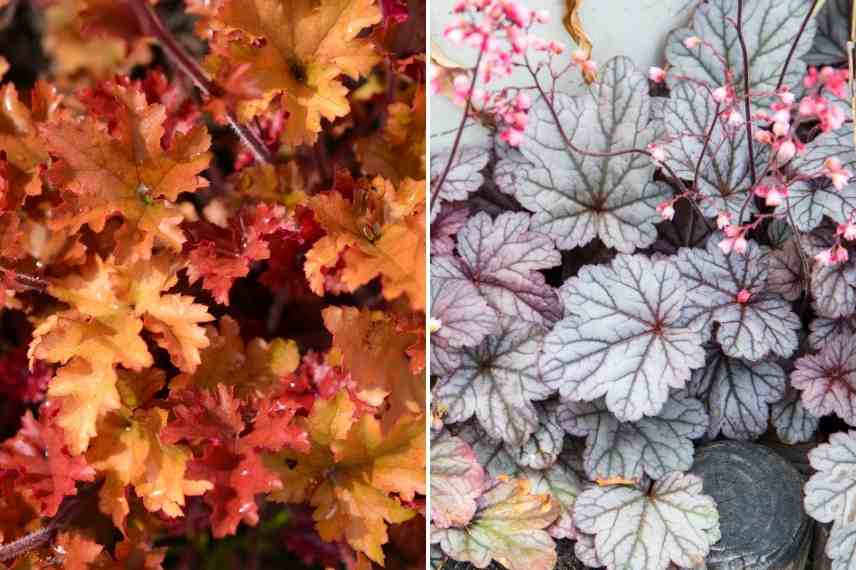
Aspidistra elatior
With its slightly old-fashioned charm, the Aspidistra is an astonishing plant. It has seen a resurgence in popularity in recent years as we dare to take it out of our interiors, where it was somewhat confined, to proudly display its large, long evergreen leaves outdoors! It is quite appealing as it boasts a strong presence with its dark but glossy foliage, which is quite thick, adding a lot of exoticism to the terrace. It typically reaches about 45 cm in height and width, and deserves a slightly elevated pot to serve as its pedestal. A true shade plant, it thrives in the north and can withstand temperatures as low as -8°C in pots. In less temperate regions, you can bring it indoors with the first frosts and enjoy it as a houseplant. The cultivar ‘Milky Way’ is adorned with very bright white spots.
Pair it with a particularly exotic Farfugium that also performs well in pots (where it is indeed advantageously contained): it will also add a lot of lushness to your terrace during the summer months.
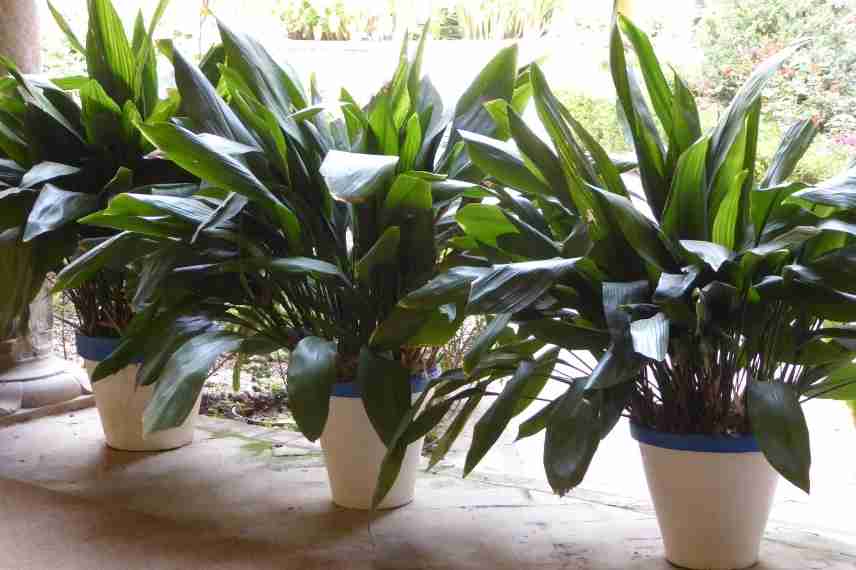
Aspidistras in lovely pots on the terrace (© Gwenaëlle Authier David)
Shrubs
Nandina Domestica
Here’s a truly essential bush when it comes to shaded areas: the sacred bamboo is indeed one of the few that can adapt to various exposures, and moreover… it grows very well in pots or containers. We particularly love it for its foliage that changes colour with the seasons, but also for its light summer flowering, and its vibrant red berries in the middle of winter. It features in this selection not only for its evergreen foliage but also for the strong character it brings to a relatively enclosed space. In very dense shade, however, it will colour its foliage a bit less with the seasonal changes. Very hardy, it withstands wind and urban pollution, making it ideal for a city terrace. There are new varieties that are always enticing, which will surely make you hesitate on which one to choose! I recommend the bright ‘Lemon Lime’ with its acid green foliage, and the cream-variegated ‘Twilight’, both of which are very ornamental. These shrubs grow to about 1m tall, but they have a relatively slow growth rate. They can be paired with white-flowering Skimmias that will be particularly highlighted, as well as the splendid purple Loropetalum Chinense ‘Pipa’s Red’.
→ Discover our association ideas with Nandina
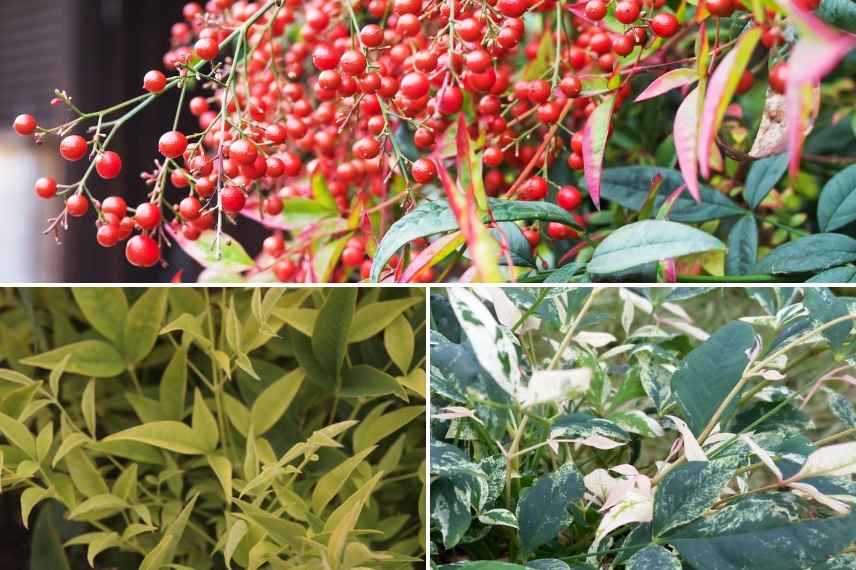
The cheerful berries of Nandina domestica, and below, the varieties, ‘Lemon Lime‘ and ‘Twilight‘
One or… two camellias
Camellias are stunning shrubs whose persistent foliage and beautiful flowering elegantly adorn a very shaded terrace. For a north-facing terrace, we recommend medium-growing cultivars with soft colours and variegated foliage that will brighten up your space which may still feel a bit dreary in spring. With a slow growth rate, choose a Camellia that is already well-formed, so you can enjoy it quickly. The Camellia japonica ‘Kerguelen’, small in size (1.20 m in all directions at maturity), is perfectly suited for pot cultivation. Its soft green foliage, slightly silvered and cream-variegated, is truly part of its charm, and its flowering from February with overlapping rosettes of pure pink brightens the terrace.
If you feel inclined, you can even install a second Camellia, which will complement the terrace, this time an autumn Camellia, to extend the season with Camellia x hiemalis ‘Pink Goddess’, a marvel with large pale pink flowers, stunning with their prominent golden stamens. This one has solid dark green foliage, less bright than the variegated ‘Kerguelen’, but when paired with a yellow-splashed euonymus, Carex Oshimensis, or a pot of Brunneras at its feet, it is truly magical!
Discover our article on Potted Camellias
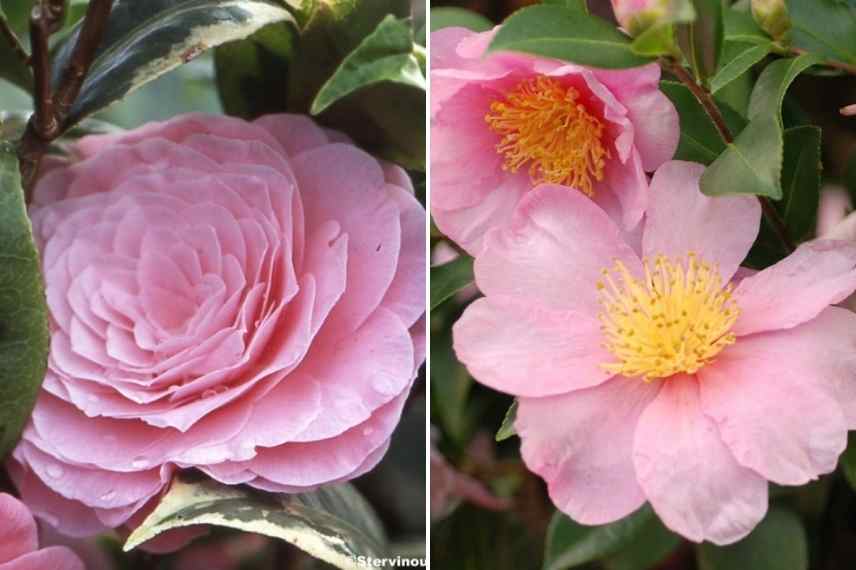
Euonymus
Another “foliage” shrub, you might say! Yes, euonymus do not flower, or if they do, it is so discreetly that it’s not why we buy them… It’s for the evergreen foliage of many varieties and the superb palette of shades that we happily install them on terraces (or in gardens). Many varieties are of real interest for a north-facing terrace: those with variegated leaves and those with golden foliage will bring a bright touch, and those with a fastigiate (columnar) habit are wonderful in tall pots, providing a structuring character and integrating into contemporary or minimalist decors. Other more bushy forms are perfect if you wish to limit visibility in the case of an urban terrace, for example. All tolerate pruning well to control their silhouette and height. Among the wide range of cultivars to brighten up a shady corner, I recommend: Euonymus japonicus ‘Aureus’, very bright as it is yellow-variegated, Euonymus japonicus ‘Emerald Gaity’, and Euonymus japonicus ‘White Spire’ variegated with grey-green and white.
You can also integrate a columnar yew into your terrace, which is also graphic on a terrace, complementing a fastigiate euonymus decor, for example.
Discover our article, Euonymus, which variety to choose?
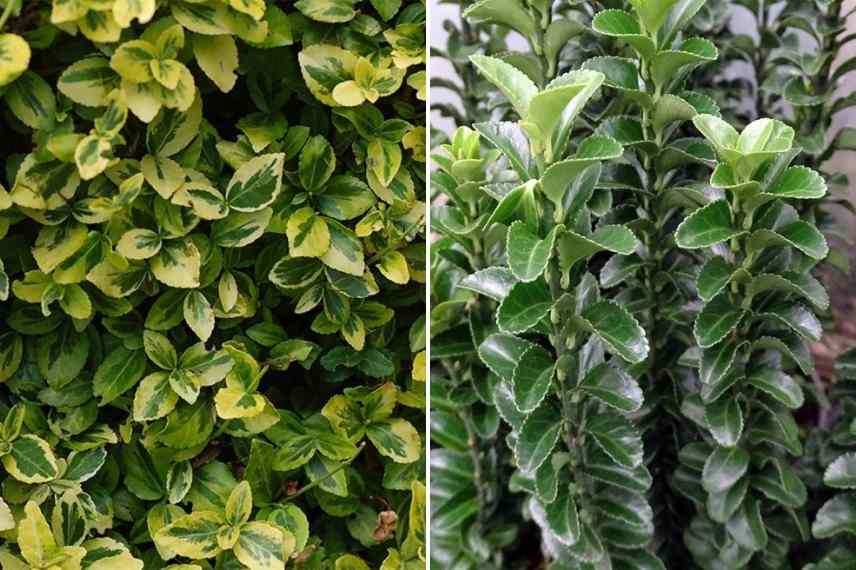
Euonymus japonicus ‘Aureus’ and Euonymus japonicus ‘Benkomasaki’
Fatsia japonica
Installing a Fatsia on your north-facing terrace has two major advantages: you have a persistent plant, which is very useful if you have a view from a living room. It provides an undeniably exotic atmosphere, even tropical if you pair it with certain other plants from this selection. Its superbly lobed foliage is dark green and glossy. Considered not very hardy, it can still tolerate some frosts down to -10°C in pots. In cold regions, it is not recommended, but elsewhere, with the pot protected during the coldest part of the season and with good mulch, it does well. It will need a large container and will thrive even in dense shade if your building is tall or if you have buildings providing significant shade. It will just produce fewer flowers and berries (resembling ivy fruits). This beautiful structuring shrub can reach a height of about 2 m under these conditions.
A Mahonia ‘Soft Caress’, which also tolerates pot cultivation, beautifully accompanies it with its very bright yellow flowering in early autumn.
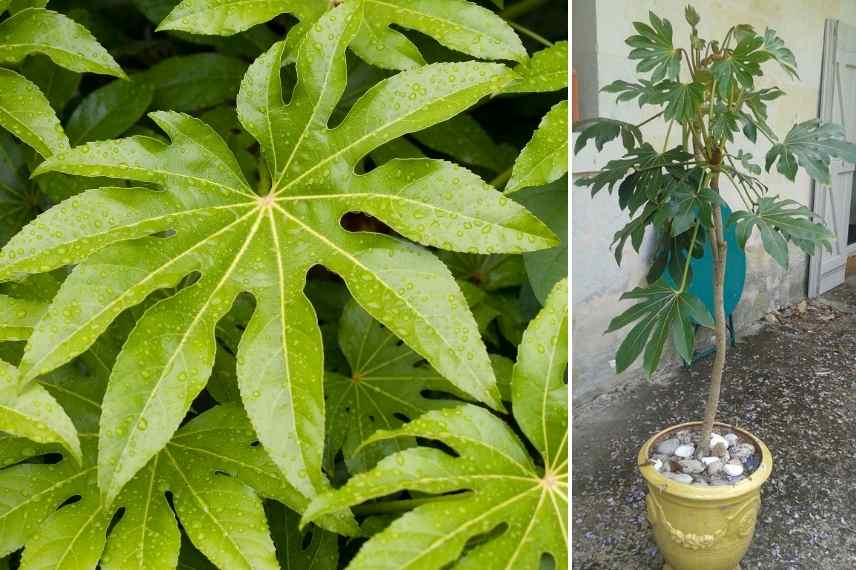
The magnificent foliage of Fatsia japonica makes a statement in the shade of a terrace (© Gwenaëlle David)
Hydrangea serrata
Medium-sized hydrangeas can certainly enhance a north-facing terrace, particularly macrophyllas and especially serrata, which do not fear dense shade in this exposure. With their pretty inflorescences, most often pink or blue, you will enjoy a long summer flowering. The flowers are particularly delicate, composed of sterile flowers with petals around the edge, and a multitude of small flowers at the centre. The Hydrangea serrata ‘Avelroz’ blooms abundantly between June and July, while a cultivar like ‘Cotton Candy’ is covered in flowers of a more intense pink mixed with chartreuse green, very bright, until the frosts. These hydrangeas are particularly hardy, so you can plant them anywhere.
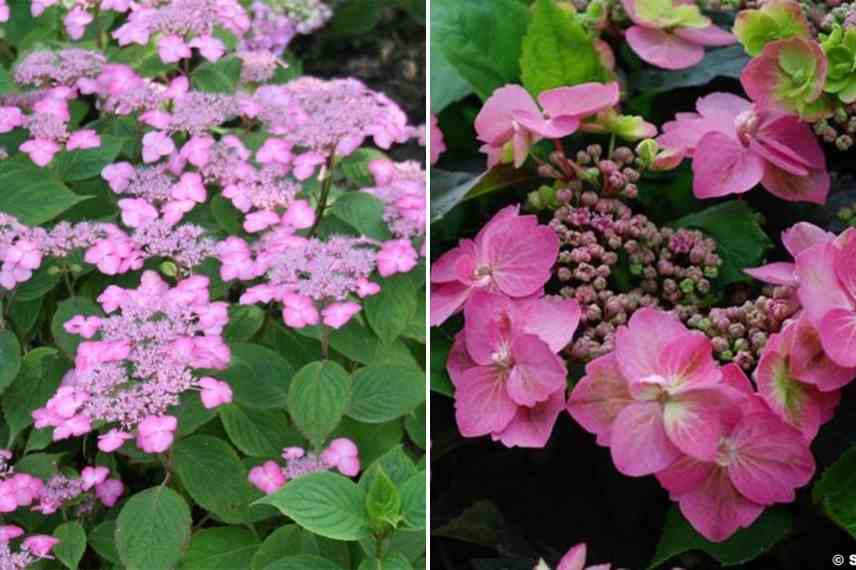 Hydrangea serrata ‘Avelroz’ and ‘Cotton Candy’
Hydrangea serrata ‘Avelroz’ and ‘Cotton Candy’
→ Discover our article on lesser-known hydrangeas
Discover other Patio shrubs
View all →Available in 1 sizes
Available in 1 sizes
Available in 1 sizes
Available in 0 sizes
Available in 0 sizes
Available in 0 sizes
Available in 0 sizes
Available in 0 sizes
Available in 0 sizes
But also...
This selection is limited; there are other perfect shade plants for a shaded terrace all year round, including several perennials and ornamental bushes:
- Among the annuals and perennials: fuchsias, fantastic for brightening up dark terraces or balconies with their vibrant colours, and New Guinea impatiens, with large velvety flowers in warm orange or pink tones that will also instantly warm up your terrace!
- In the bushes: among those that will thrive in pots: boxwood that can be pruned as desired for a classic or modernist feel, medium-sized rhododendrons providing stunning flowering in May, fragrant daphnes, the Burkwood osmanthus with its extraordinary spring fragrance, the evergeen sarcococca, fastigiate yews, etc.
- Not to forget the shade plants: primarily Carex morrowii and oshimensis, which remain small in size to complement pot arrangements, and Hakonechloa macra ‘Aureola’, which literally illuminates the shade.
Read also
10 hardy evergreen shrubsFurther reading
Discover our ideas to enhance a terrace:
- to the South: What can be planted on a south-facing terrace?
- to the East: What can be planted on an east-facing terrace?
- Subscribe!
- Contents
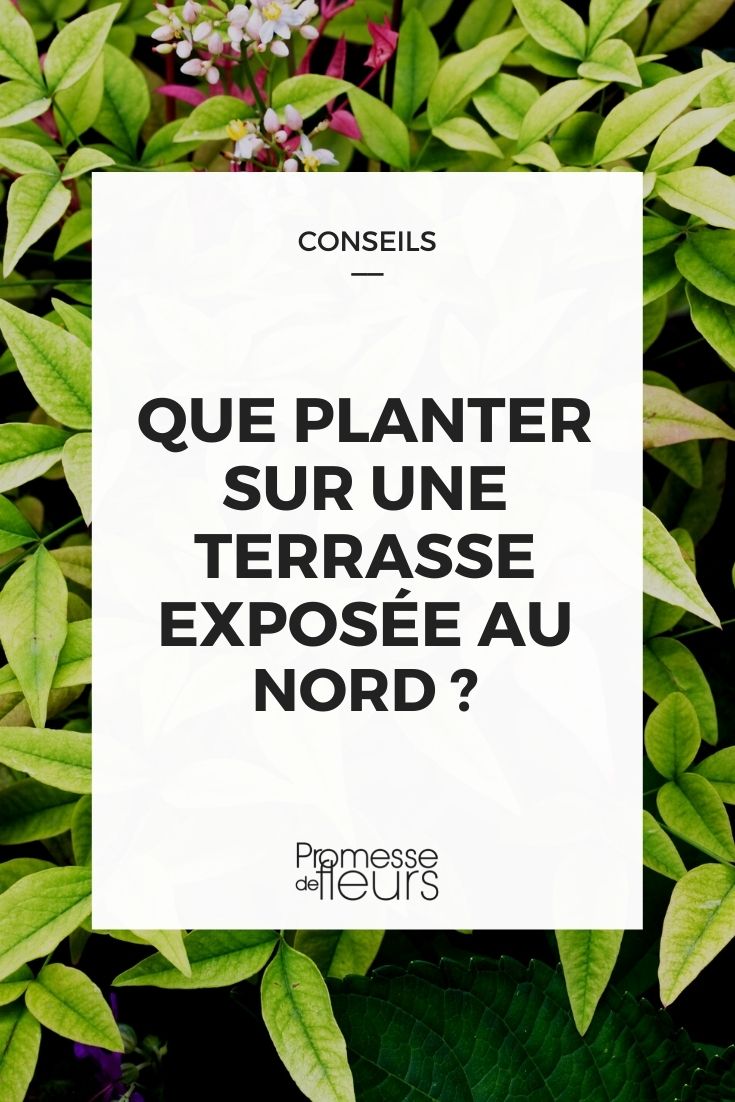































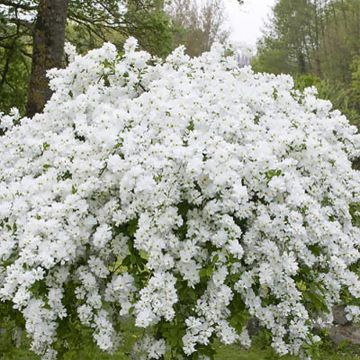
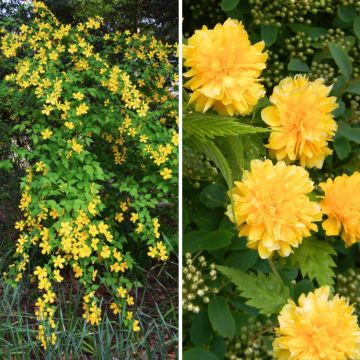
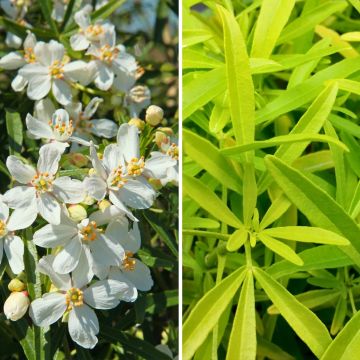

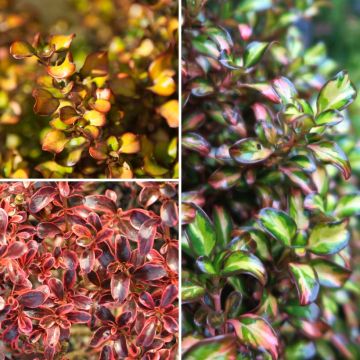
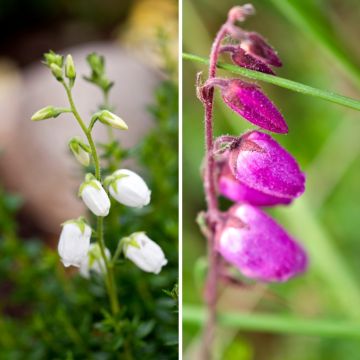
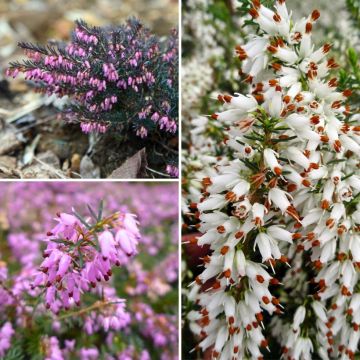
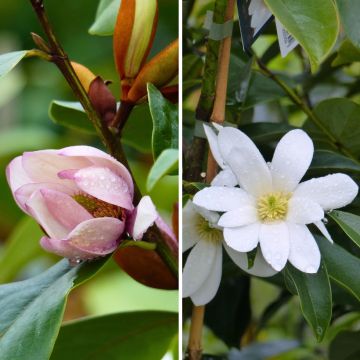
Comments